One of the most effective methods Female contraception today is the intrauterine device. The reliability of this method of contraception is about 98%, which is a very high result.
Let's take a closer look at what the action is based on intrauterine devices what are reviews about them in women, what examinations need to be done before installation who can put a spiral, and who doesn’t, what are the indications and contraindications, as well as possible complications.
The action and effectiveness of the intrauterine device
An intrauterine device is a small plastic device (most often), which, when inserted into the uterus, blocks the possibility of a fertilized egg entering the uterine cavity and further development of the embryo. Some women consider the IUD to be an abortifacient method of contraception, since fertilization still occurs. For some religious people this is unacceptable. For such people it is more suitable from a moral point of view intrauterine device Mirena. It not only mechanically prevents pregnancy, but also prevents fertilization from occurring due to changes hormonal levels(this spiral releases daily a small amount of levonorgestrel hormone - 20 mcg per 24 hours, the effect is similar to the effect of oral contraceptives). About intrauterine Mirena spirals reviews positive, there are no “punctures” due to its double action. Read more women's opinions and discussions in the comments at the bottom of this page.
Types of intrauterine devices
There are several types of intrauterine systems. They differ from each other in the material from which they are made, in size and shape. Only a doctor can choose the right intrauterine device. The most popular intrauterine devices: Nova T, Multiload, Juno.
Spiral Nova T (price about 2000 rubles) has a T-shaped appearance. Its horizontal branches are very elastic, which makes the installation of the IUD easier and non-traumatic. This device can remain in the uterus for up to 5 years.
Intrauterine device Multiload (price
- about 2500 rubles) has the shape of a semi-oval, at the ends of its branches there are spike-like protrusions that allow the spiral to better attach to the walls of the uterus. This feature reduces the risk of spontaneous prolapse (expulsion) of the IUD.
Navy Juno Bio – E380 more economical option price does not exceed 200 rubles for a domestically produced IUD.
IUD Mirena Today it is considered one of the most effective, but also expensive IUDs. Price this intrauterine device about 7000-10000 rubles. The validity period of Mirena is 5 years.
By the way, in our market there are IUDs that are more expensive, for example, a spiral with a gold core, its cost is more than 10,000 rubles.
Installation of the spiral Mirena for fibroids small sizes are also acceptable, and some experts even believe that this “hormonal spiral” can slow down the growth of this benign neoplasm.
The big advantage of expensive IUDs is that the materials they contain (gold, silver, copper) have an anti-inflammatory effect.
But talking about which of these intrauterine devices is the best is wrong. Each of them has its pros and cons. In addition, the IUD must be selected individually for each woman. Buy an intrauterine device You can find it in almost any pharmacy. But before purchasing, we would recommend calling several pharmacies at once to find out their price, as it can vary greatly.
Examinations before installation of an intrauterine device
Firstly, this gynecological examination and taking swabs. The spiral is installed only in healthy women who have given birth more often and who at the moment IUD installations There are no inflammatory processes in the reproductive system. It is also recommended to do an ultrasound to detect possible contraindications to this type of contraception.
Installation of an intrauterine device carried out 5-7 days from the beginning menstrual cycle, when the cervical canal is slightly open, this will make the whole process easier. Before installing the IUD, the gynecologist once again conducts a gynecological examination and measures the length of the uterus using special instruments. The installation itself lasts no more than 5-7 minutes, or even less. At this time, a woman may experience unpleasant pulling sensations lower abdomen.
Immediately after installation and for 7-10 days, mild pain may persist. Same as smears bloody issues. If they do not cause you much discomfort, then this is within normal limits. After a few days you can resume sex life no longer afraid of pregnancy.
What women who have an IUD should always remember
1. It is necessary to periodically independently check for the presence of spiral threads protruding from the cervix. Their length should remain the same. If you cannot feel the threads, they have become too long, or vice versa - short, then you need to urgently see a doctor, this means that the IUD has moved out of its place. And if there are no threads, then it is quite possible that expulsion has occurred - spontaneous prolapse of the IUD or the spiral is lost somewhere in the uterine cavity.
2. Even if everything is fine, you need to go to the gynecologist once every six months.
3. Under no circumstances should you wear the IUD for longer than the recommended period, since the IUD can “grow” into the uterine cavity and can only be removed from there surgically. Doctors usually recommend remove the intrauterine device several months before its expiration date to avoid complications.
4. Unfortunately, even the IUD does not guarantee 100% non-pregnancy. On average, out of 100 women with an IUD installed, 1 becomes pregnant. Therefore, you need to monitor your menstrual cycle as carefully as before installing the IUD.
5. If you have severe abdominal pain or bleeding, immediately go to the doctor or call an ambulance.
6.If you are planning a pregnancy, then be sure to IUD removal. It (removal), as well as insertion of an intrauterine device, is performed only by a gynecologist.
Indications and contraindications for IUDs, advantages and disadvantages, pros and cons
1.The IUD is indicated for women who have given birth as a reliable means of contraception.
2. The reliability of the IUD does not exceed 98%.
3. There is a risk (albeit low) of perforation of the uterine wall, both during and after installation, of the IUD falling out (expulsion).
4.Heavier menstruation, intermenstrual bleeding is possible.
5. After installing an IUD, it is not advisable to engage in active sports or pump up your abs.
6. An IUD cannot be installed in women who have inflammatory diseases of the internal genital organs, neoplasms in the uterus that deform its cavity.
7.Despite all these disadvantages, intrauterine devices also have undoubted advantages - they are one of the most reliable methods of modern contraception (along with condoms and oral contraceptives), and have a long validity period (up to 7 years).
- inert IUDs. Outdated version, first generation of spirals. Currently, in many countries the use of inert IUDs is prohibited, since their use is associated with a higher frequency of spontaneous falls and low reliability compared to the latest generations of spirals;
- copper-containing IUDs. Second generation, the main advantage is satisfactory tolerability, increased efficiency, ease of administration/removal;
- hormone-containing IUDs. The third generation of IUDs, which has the advantages of oral contraception and IUDs. They are T-shaped structures, the stem of which is filled with levonorgestrel or progesterone. They have a targeted local effect on the mucous membrane of the cervix, fallopian tubes, and endometrium. Pros: Reduced episodes inflammatory diseases genitals, reduction of hyperpolymenorrhea. Cons: increased intermenstrual bleeding.
Advantages of the intrauterine device:
Flaws:
- in women who are active sex life, the risk of inflammation increases;
- probability of expulsion (loss);
- If installed incorrectly, acyclic bleeding and pain are possible;
- The IUD does not protect against HIV infection and sexually transmitted diseases;
- not suitable for women with painful and prolonged menstruation;
- during the first 2-3 months of using the IUD, it increases menstrual flow;
- installation/removal is carried out only by a gynecologist.
Operating principle
Metal (silver/gold) and plastic spirals suppress the vital activity of sperm, making the process of egg fertilization impossible, and change the physiological transformation of the endometrium, which prevents the implantation of a fertilized egg. The IUD stimulates uterine contractions and fallopian tubes, due to which the fertilized egg enters the uterus prematurely: the endometrium is not ready to receive the egg, the trophoblast is defective, so implantation becomes impossible. With IUDs containing hormones, the viscosity of cervical secretions increases, as a result of which the migration of sperm through the fallopian tubes and uterus is reduced, and ovulation is suppressed.
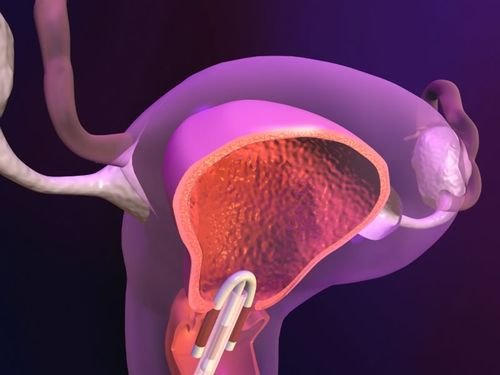
Instructions for use
The selection, insertion, and removal of the IUD is performed by a gynecologist. The injection is carried out during the period of heavy menstrual flow, on days 1-2 of the cycle - this guarantees minimal trauma cervical canal. The introduction of an intrauterine device during childbirth and uncomplicated abortion is allowed.
Conditions for installing the spiral:
- examination by a gynecologist;
- extended colposcopy;
- smears on flora from the cervical canal and vagina;
- smears for oncocytology;
- results of ultrasound examination of the pelvic organs.
Method of administration:
- using mirrors, expose the cervix, disinfect, grab the anterior lip with forceps;
- measure the length of the uterine cavity with a uterine probe;
- install a spiral into the uterine cavity;
- The IUD tendrils are trimmed, the forceps are removed, disinfected, and a course of antibiotic therapy is prescribed.
Absolute contraindications:
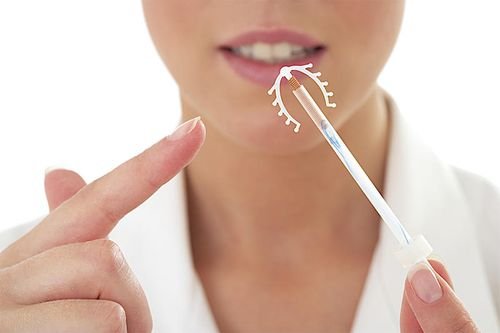
Relative contraindications:
- history of ectopic pregnancy;
- absence labor activity in past;
- chronic anemia, endometrial pathology;
- hyperpolymenorrhea, high risk of sexually transmitted infections.
Side effect:
- pain in abdominal cavity after/during installation of the spiral;
- bradycardia, iron deficiency anemia;
- spontaneous bleeding in the middle of the cycle;
- cutaneous allergic reactions, infectious diseases of the genitourinary tract.
Conditions requiring immediate medical attention:
- intense cramping pain in the lower abdomen;
- a sharp rise in temperature against the background pain syndrome;
- menstruation turning into heavy bleeding;
- identification of the intrauterine device in the vagina;
- perforation of the IUD of the uterine wall;
- pelvioperitonitis, acute salpingoophoritis/endometritis.
The best intrauterine device
There are many names and manufacturers of IUDs, the most popular are Juno, Mirena, Multiload, Nova T:
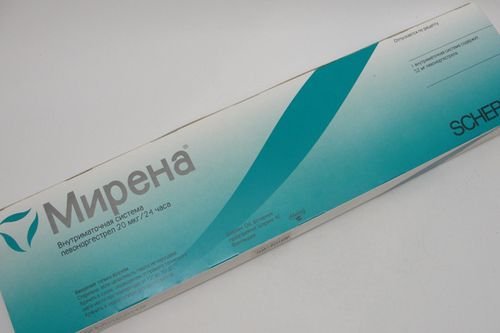
Independent use of an IUD is unacceptable. Only a gynecologist can select an acceptable type of intrauterine device and correctly install it into the uterine cavity.
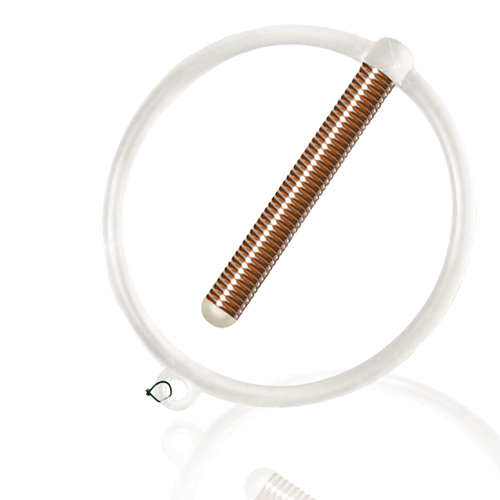 A reliable means of protection against unwanted pregnancy are the IUDs. They are released different shapes and size, but their action is always aimed at preventing the possibility of conception.
A reliable means of protection against unwanted pregnancy are the IUDs. They are released different shapes and size, but their action is always aimed at preventing the possibility of conception.
The intrauterine ring is considered one of the safest to use. Its anchor has the appropriate shape, inside of which there is a copper or silver rod. Depending on the type chosen, the contraceptive will last from 3 to 5 years, after which it must be removed. It is worth knowing that a week after the removal of the IUD, a woman may become pregnant.
Like other IUDs, round intrauterine devices have a similar principle of operation. Being in the uterine cavity, they prevent eggs from attaching to it, and the motor function of sperm is inhibited. Only a gynecologist can administer this contraceptive. A week after installation, a woman can resume sexual activity without fear of becoming pregnant.
The ring-shaped intrauterine device is one of modern methods contraception. Its main advantage is that it practically will not fall out. It is usually prescribed to women who have had an abortion or those who have a history of IUD prolapse.
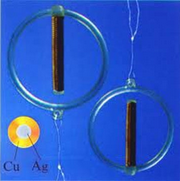 Depending on her preferences, a woman can choose a spiral without or with antennae. But it is worth noting that quite often the threads (antennae) when removing the IUD break off or are simply retracted into the cervical canal. In this case, the removal of the device occurs without any difficulties. Therefore, the presence or absence of antennae should not fundamentally influence the choice of a contraceptive of this type.
Depending on her preferences, a woman can choose a spiral without or with antennae. But it is worth noting that quite often the threads (antennae) when removing the IUD break off or are simply retracted into the cervical canal. In this case, the removal of the device occurs without any difficulties. Therefore, the presence or absence of antennae should not fundamentally influence the choice of a contraceptive of this type.
As side effects from the introduction of VSM, there is an increase in blood loss during the menstrual cycle. But they do not cause significant harm to a woman’s health. Minor bleeding may also occur between cycles.
The round intrauterine device must be sold in a separate package, have instructions for use, the necessary registration certificates and certificates. Only if these conditions are met is it worth purchasing this product. As a rule, the round intrauterine device, the photo of which is shown on the packaging, does not require medication special conditions storage and is available without a prescription.









